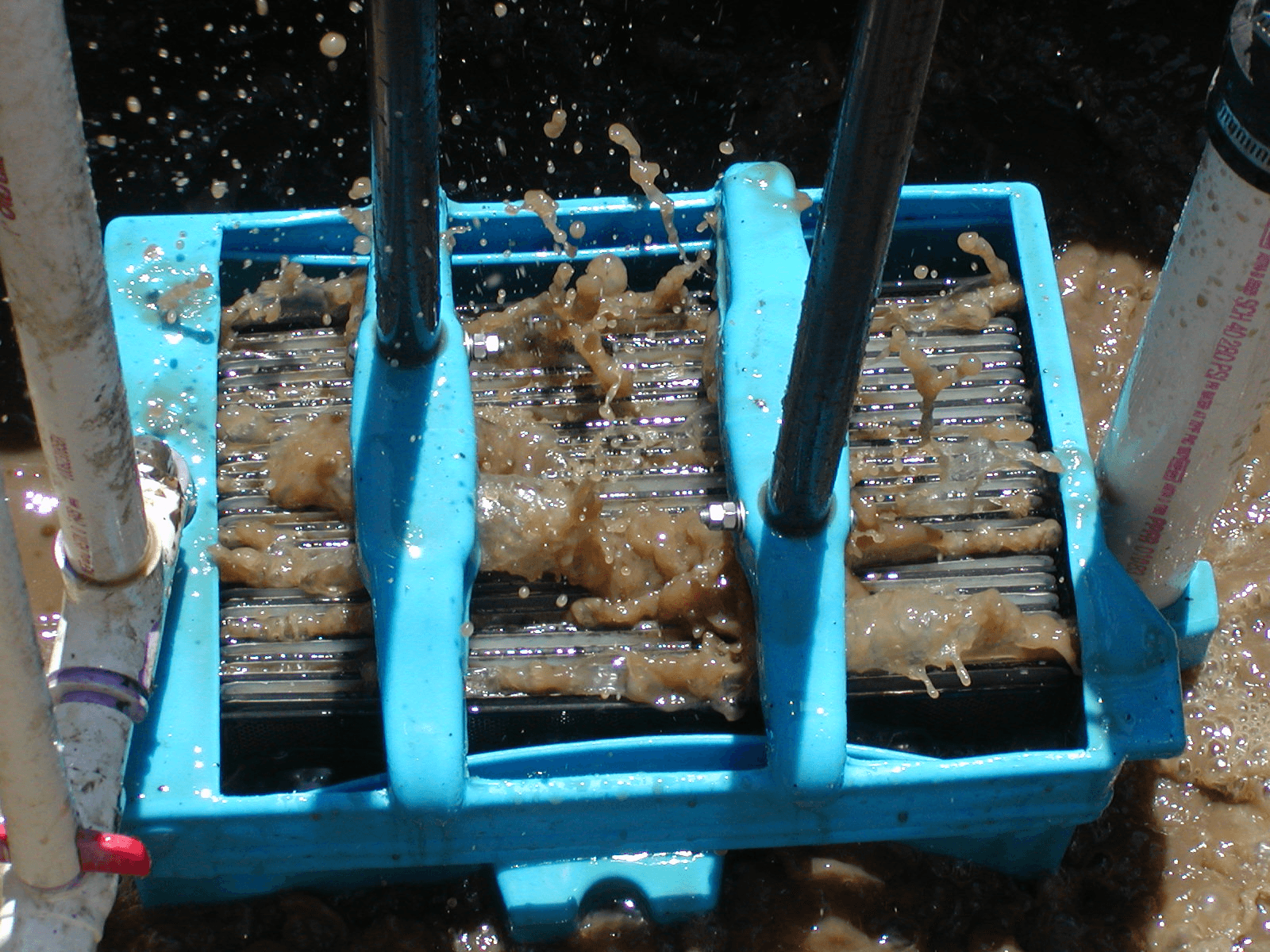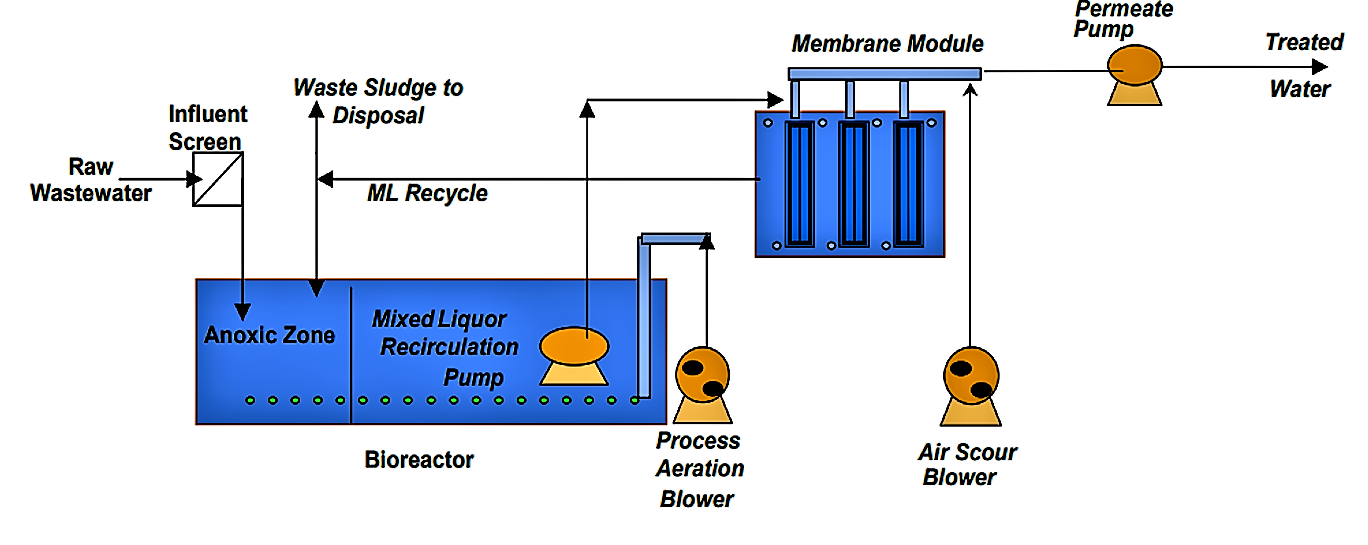Exploring the Environmental Impact of Membrane Bioreactor in Wastewater Treatment
Wiki Article
Understanding Membrane Layer Bioreactors: The Future of Wastewater Treatment
Membrane bioreactors (MBRs) stand for a significant development in the area of wastewater therapy, incorporating biological processes with advanced membrane filtration to enhance effluent quality. As international water deficiency and strict regulatory structures end up being increasingly pressing concerns, MBR modern technology offers an effective reaction via its ability to lessen footprint and maximize source healing. Nonetheless, the fostering of MBRs is not without its obstacles, which merit mindful factor to consider. What are the essential elements influencing their implementation and lasting practicality in different contexts? The solutions might reshape our approach to wastewater administration.What Are Membrane Layer Bioreactors?

The core components of MBR systems consist of a bioreactor where microbial task occurs and a membrane layer system that filterings system the blended liquor. This twin functionality allows the synchronised deterioration of raw material and solid-liquid splitting up in a solitary step. MBRs can operate in both immersed and external arrangements, with immersed systems being more usual due to their small layout and operational efficiency.
The fostering of MBR technology has gotten traction in numerous applications, varying from local wastewater treatment to industrial effluent management. MBRs are especially helpful in circumstances where area is minimal or strict effluent top quality requirements have to be met. By keeping a high focus of bacteria within the bioreactor, MBRs boost the degradation of organic toxins, thus producing greater treatment efficiencies contrasted to conventional methods.
Secret Advantages of MBR Technology
The assimilation of organic therapy with membrane purification in MBR systems supplies many advantages that set it apart from conventional wastewater treatment approaches. One of the main benefits is the improved effluent high quality. MBRs successfully eliminate suspended solids and pathogens, accomplishing greater degrees of filtration that meet rigid discharge criteria and promote water reuse applications.
An additional considerable advantage is the minimized sludge manufacturing. MBR systems create less excess sludge, bring about reduced disposal expenses and a reduction in environmental impact. The closed nature of the membrane layer system lessens the threat of smell discharges and boosts overall process control.
Last But Not Least, MBRs are versatile and adaptable, making them suitable for various wastewater types, including industrial and metropolitan resources. The ability to integrate with innovative treatment modern technologies better enhances their efficiency, making MBRs an appealing solution for the future of wastewater management.
Obstacles and Limitations of MBRs
While MBR innovation uses countless advantages, it additionally deals with several challenges and constraints that can impact its extensive adoption. One significant obstacle is the high resources and operational expenses connected with MBR systems. The first financial investment for membrane products and the necessary infrastructure can be substantial, making it much less obtainable for smaller markets or districts.Additionally, membrane fouling remains a vital issue that can diminish system performance and rise maintenance needs. Fouling occurs when solids, raw material, or microbes gather on the membrane layer surface, bring about lowered leaks in the structure and requiring constant cleaning or substitute.
One more constraint includes the complexity of the innovation. MBR systems call for proficient personnel for operation and maintenance, which can be an obstacle in regions with restricted technological knowledge. Furthermore, the disposal of spent membranes offers environmental concerns, as the products are frequently not biodegradable and can contribute to lose administration obstacles.
Finally, while MBRs can effectively deal with a vast variety of wastewater, they might not be suitable for all applications, particularly those with high focus of fats, oils, and greases, requiring additional study and advancement to address these restrictions.
Applications of Membrane Layer Bioreactors
In various fields, membrane layer bioreactors (MBRs) have actually arised as a flexible remedy for wastewater therapy (Membrane Bioreactor). Their applications cover community, commercial, and agricultural settings, showcasing their versatility and efficiency in varied atmospheres. In local wastewater therapy plants, MBRs dramatically enhance effluent top quality, enabling water reuse and decreasing the environmental effect of released wastewaterIndustrially, MBRs are utilized in food and drink processing, textile production, and pharmaceutical manufacturing, where they properly deal with high-strength waste streams. Their ability to handle changing loads and varying contaminant concentrations makes them particularly useful in these markets. Additionally, MBRs help with the removal of virus, suspended solids, and raw material, adding to conformity with strict discharge laws.
In visit site farming, MBRs are progressively utilized for dealing with farming runoff and animals wastewater, making it possible for the recovery of nutrients for fertilizer production. They additionally help in the therapy of greywater for irrigation, promoting sustainable water management techniques.
The versatility of MBRs is additional shown by their integration with various other technologies, such as anaerobic digestion and advanced oxidation processes, boosting general efficiency and resource recuperation in wastewater treatment systems.
The Future of Wastewater Treatment
Advancements in modern technology and an expanding emphasis on sustainability are shaping the future of wastewater try these out treatment. Membrane bioreactors (MBRs) exhibit this shift by integrating biological treatment procedures with membrane layer purification, causing top notch effluent suitable for reuse. The trend in the direction of round economic climates is triggering facilities to embrace MBRs for their capability to recoup sources, such as water and nutrients, from wastewater.Technologies in membrane products and setup are boosting the efficiency and long life of MBR systems, lowering functional prices and power consumption. Smart modern technology integration, consisting of real-time surveillance and automated control systems, is further maximizing efficiency and enabling anticipating upkeep, thus lessening downtime.
Moreover, regulatory pressures and societal expectations are pushing sectors and municipalities to adopt even more sustainable techniques. Membrane Bioreactor. The shift in the direction of decentralized wastewater therapy options is acquiring grip, permitting localized therapy that minimizes transportation costs and power usage
Verdict
Membrane layer bioreactors (MBRs) represent a transformative method to wastewater treatment, incorporating biological processes with advanced membrane technology. The benefits of MBRs, consisting of enhanced effluent quality, lowered spatial requirements, and lower sludge manufacturing, place them as a feasible service in the middle of expanding urbanization and more stringent ecological laws. In spite of existing difficulties, the ongoing technology in membrane products and functional approaches promises to bolster the efficiency directory and adoption of MBRs, ensuring their essential role in the future of sustainable wastewater administration.Membrane bioreactors (MBRs) stand for a notable advancement in the field of wastewater therapy, integrating organic processes with advanced membrane filtration to improve effluent top quality.Membrane layer bioreactors (MBRs) incorporate organic therapy procedures with membrane filtration to properly treat wastewater.The combination of organic treatment with membrane filtration in MBR systems offers numerous benefits that set it apart from standard wastewater therapy techniques. Membrane layer bioreactors (MBRs) exemplify this shift by incorporating organic therapy processes with membrane purification, resulting in premium effluent appropriate for reuse.Membrane layer bioreactors (MBRs) stand for a transformative strategy to wastewater treatment, integrating organic processes with innovative membrane innovation.
Report this wiki page